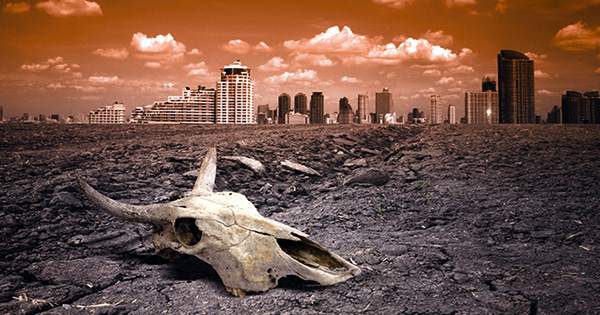A troubling new study published in the journal Nature has uncovered a common feature of almost all mass extinction events throughout history, and warns that the odds of the next one increasing owing to climate change. The authors discovered that all previous periods of high global warming have resulted in deadly freshwater algal blooms that last hundreds of millennia, and that the spread of these hazardous bacteria is currently visible once more.
The end-Permian event (EPE), often known as the Great Dying was the biggest extinction catastrophe in Earth’s history, lasting 252 million years. The EPE, which was triggered by a surge in volcanic activity, is linked to a significant rise in carbon dioxide levels and global temperatures, and is thought to have wiped out 90 percent of all species on the world.
The researchers looked at fossil, sediment, and chemical records in rocks in the Sydney Basin, Australia, to see how this horrific event altered freshwater ecosystems. They discovered a tremendous rise in microscopic algae and cyanobacteria shortly after the EPE, with repeated blooms lasting 100,000 years or more.
Microbes like this help aquatic environments thrive by oxygenating the water under normal conditions. Blooms that spiral out of control, on the other hand, deplete oxygen and release chemicals that render the environment uninhabitable for all other life forms.
The conversion of freshwater bodies into poisonous sludge, according to the study’s authors, prevented ecosystems from recovering for 3 million years following the EPE.
They go on to say that a perfect combination of faster greenhouse gas emissions and greater global temperatures as a result of volcanic activity, along with an influx of nutrients into freshwater bodies, created this deadly bloom. As a result of wildfires and droughts, which resulted in widespread deforestation, chemicals in soil began to seep into streams.
Furthermore, the authors discovered that this behavior was far from unique, occurring during every mass extinction excluding the renowned end-Cretaceous extinction, which wiped off dinosaurs. This asteroid-driven event, which occurred 66 million years ago, did not result in sufficient increases in greenhouse gases to cause a massive algal bloom.
According to research author Tracy Frank, present anthropogenic climate change has the ability to replicate the circumstances required for such a blossoming event, resulting in a huge ecological disaster.
















